
Ephemeral rollups are rapidly redefining the boundaries of blockchain scalability and user experience. Unlike conventional Layer 2 solutions or monolithic blockchains, ephemeral rollups introduce a new paradigm: disposable, on-demand blockchains that can be spun up for specific workloads and seamlessly retired when demand subsides. This approach is not only pragmatic for resource optimization but also pivotal for real-time decentralized applications that require ultra-low latency and high throughput.

What Are Ephemeral Rollups?
At their core, ephemeral rollups are temporary, high-performance environments that leverage the Solana Virtual Machine (SVM) to process transactions with end-to-end latencies below 50 milliseconds globally. These rollups give developers the flexibility to create dedicated runtimes tailored to specific application needs, such as gaming tournaments, flash DeFi events, or social platform surges, without permanently fragmenting state or requiring complex bridging mechanisms.
The architecture is elegantly modular:
- State Delegation: Specific accounts are locked to an ephemeral rollup, enabling isolated execution while maintaining compatibility with the base chain.
- Sequencer Control: A sequencer manages temporary state changes. Violations trigger forced reversion and unlocks on Layer 1 (L1), preserving security guarantees.
- Parallel Read Access: Even when accounts are delegated, L1 transactions can read their state. Non-delegated accounts remain fully accessible and modifiable.
This design ensures that while performance is maximized in the short-lived environment, composability and security remain anchored to the main chain. Developers can integrate ephemeral rollups without disrupting existing Solana smart contracts or dApp logic. For a deep dive into these mechanisms, see the technical overview at MagicBlock’s documentation.
The Disposable Blockchain Revolution: Why Now?
The rise of disposable blockchains is directly tied to the evolving demands of decentralized applications. As usage patterns become more bursty, think viral game launches or liquidity mining campaigns, the need for elastic infrastructure has never been clearer. Traditional scaling methods either overprovision resources (leading to waste) or underdeliver during peak times (causing congestion). Ephemeral rollups solve this by providing just-in-time scalability.
This innovation is particularly relevant in the context of Rollups-as-a-Service (RaaS), which gives each dApp its own isolated fee market and execution environment. When demand tapers off, developers can simply dispose of the temporary rollup, minimizing operational costs and complexity (source). The result is a highly efficient model where resources are allocated dynamically, reducing both transaction fees and infrastructure overhead, a key step toward zero-fee blockchains for end-users.
Key Benefits of Ephemeral Rollups for App-Chains
-
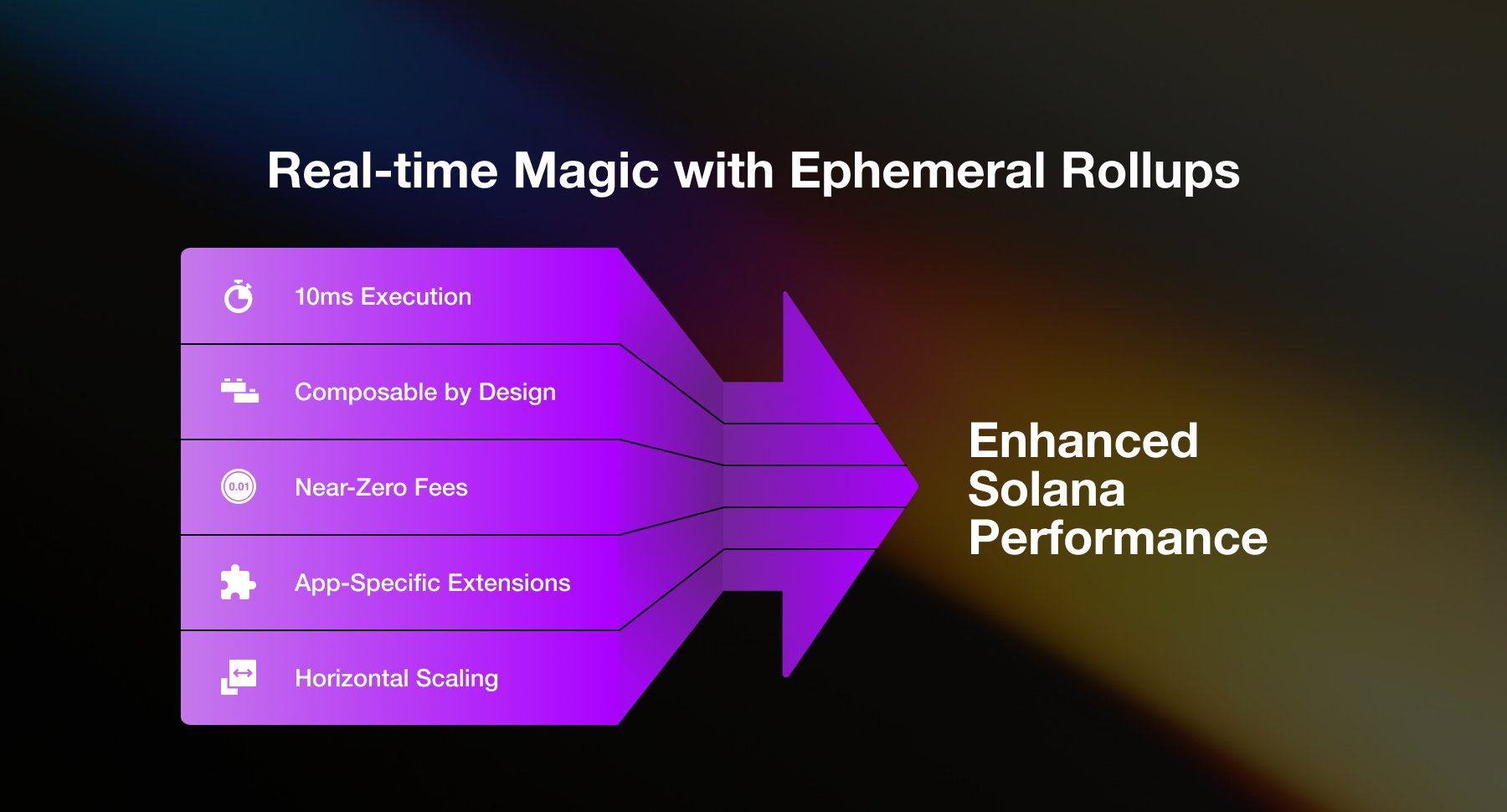
Ultra-Low Latency for Real-Time Applications: Ephemeral rollups deliver end-to-end transaction latencies below 50 milliseconds globally, enabling seamless experiences for gaming, DeFi, and social dApps.
-

On-Demand, Customizable Execution Environments: Developers can spin up disposable rollups tailored to specific app needs, optimizing performance and resource allocation during periods of high demand.
-
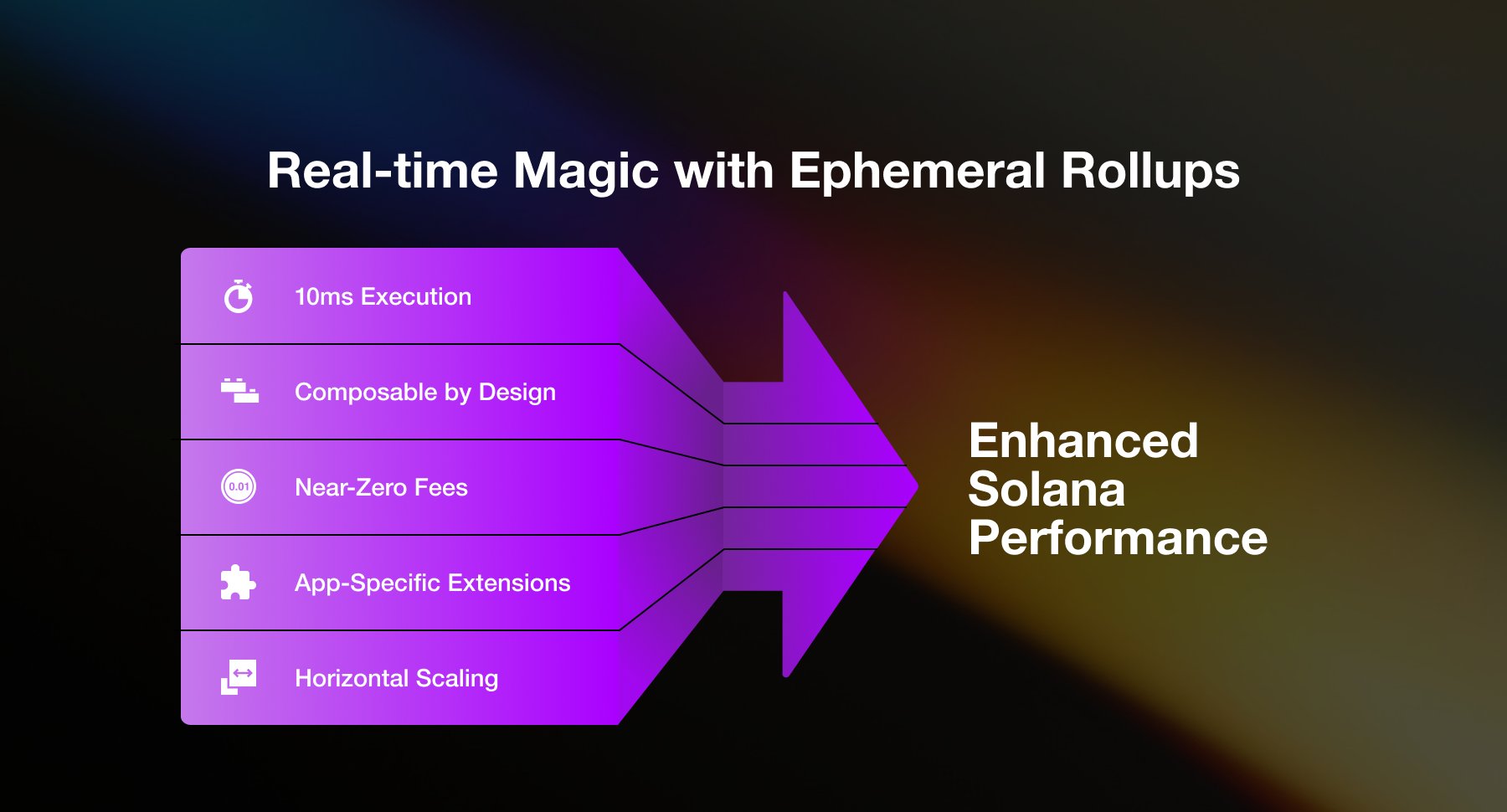
Isolated Fee Markets: Each ephemeral rollup provides its own dedicated fee market, shielding applications from congestion and volatile fees on the main chain.
-
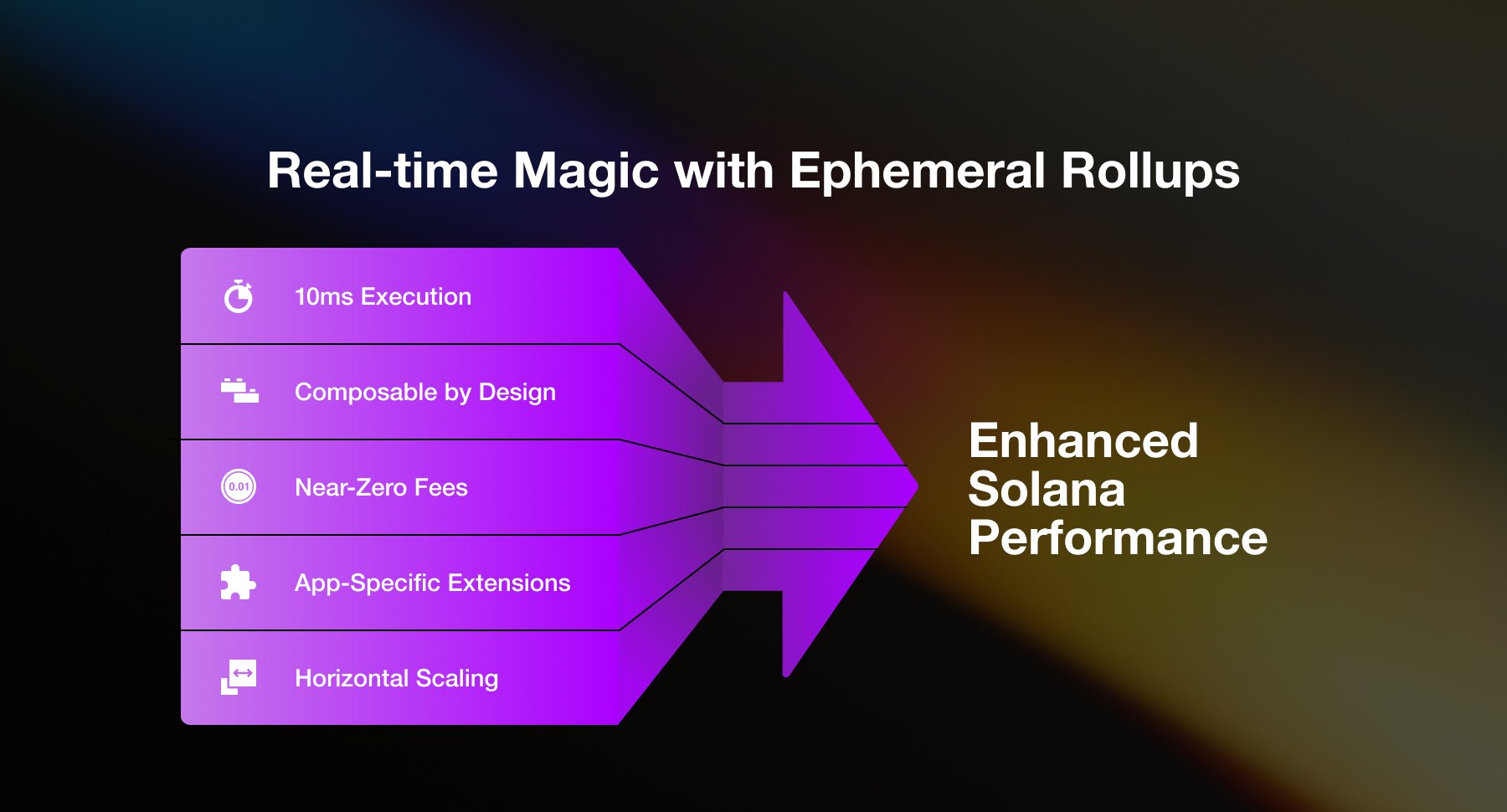
Full Composability with Solana Smart Contracts: Ephemeral rollups maintain seamless integration with existing Solana programs, avoiding state fragmentation and complex bridging.
-
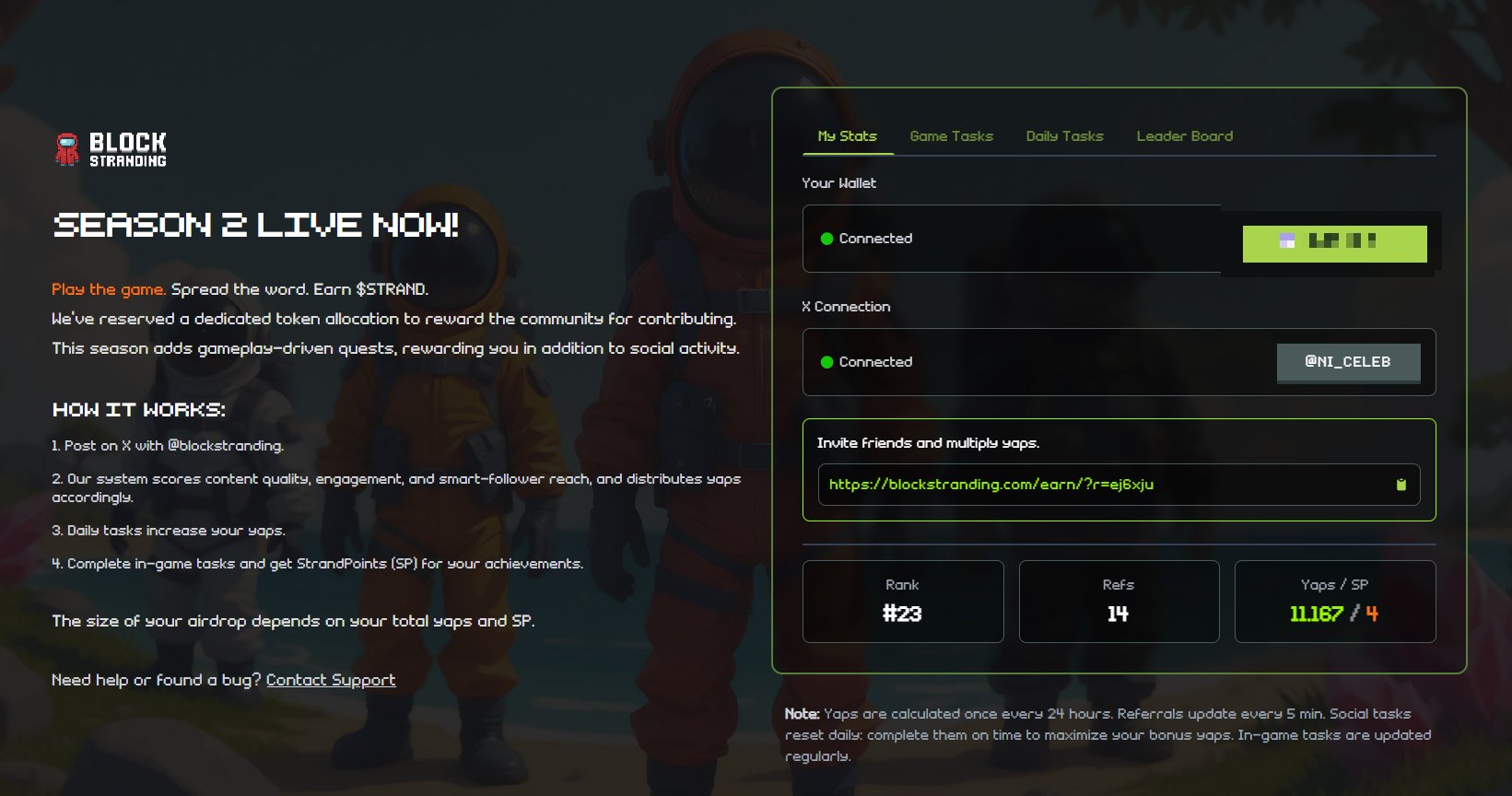
Secure State Anchoring and Parallel Read Access: State accounts are securely delegated and anchored to the L1 blockchain, while allowing parallel reads and preserving mainnet trust guarantees.
-
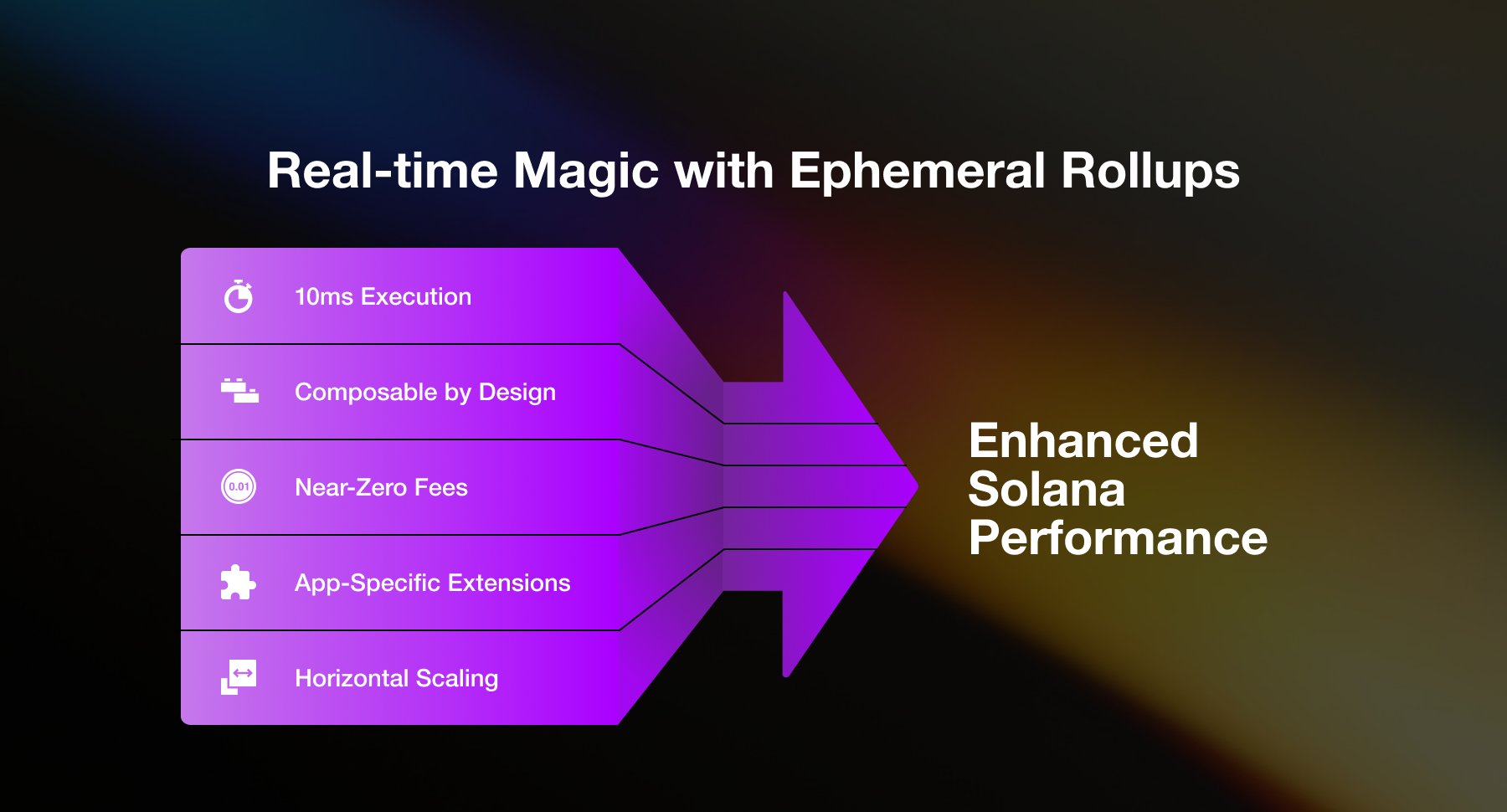
Rapid Deployment and Disposal: Rollups can be quickly launched and terminated as needed, supporting temporary surges in activity without long-term overhead.
Architecture and Composability: No State Fragmentation
A critical advantage of on-demand rollups is their ability to avoid state fragmentation, a common pitfall in traditional scaling solutions. With ephemeral rollups on Solana, programs and assets reside directly on the base layer; no bridging or asset wrapping is required. This ensures that any improvements at L1 immediately benefit all applications without additional migration work (source). Developers retain full composability across smart contracts while gaining access to specialized fee markets tailored for their workload’s duration and intensity.
This architectural clarity translates into tangible benefits:
- No need to re-deploy or update programs when scaling up temporarily
- Straightforward integration with existing Solana tooling
- Simplified trust assumptions, security remains anchored at L1 throughout
As MagicBlock and other ecosystem players move toward the first production releases of ephemeral rollups, the implications for scalable rollups and custom app-chains are profound. Not only do these disposable blockchains enable unprecedented performance for high-throughput events, but they also introduce new possibilities for fee market design. By granting each ephemeral rollup its own isolated fee market, developers can experiment with innovative pricing models, ranging from zero-fee promotional periods to congestion-based dynamic fees, without impacting the broader network.
Specialized Fee Markets: Optimizing Cost and UX
One of the most compelling aspects of ephemeral rollups is their ability to support specialized fee markets. Instead of competing with global demand on the base chain, applications can fine-tune transaction costs to match their users’ needs and business logic. For example, a gaming platform might subsidize all in-game transactions during a tournament window, while a DeFi protocol could implement micro-fees that scale with transaction urgency or size.
This granular control is especially valuable for projects targeting mass adoption or experimenting with new monetization strategies. As more dApps adopt on-demand rollups, expect to see an explosion of creative economic models, ushering in an era where zero-fee blockchains are not just theoretical but practical at scale.
The Road Ahead: Adoption Milestones and Open Questions
The roadmap for ephemeral rollups is ambitious but grounded in pragmatic milestones. MagicBlock’s phased rollout, starting with third-party node operation by Q2 2025 and aiming for permissionless participation by year-end, will be a key litmus test for the technology’s maturity (source). Critical to this evolution will be robust fraud-proof systems and seamless integration into existing developer workflows.
However, several open questions remain. How will security guarantees evolve as ephemeral rollups become permissionless? What best practices will emerge around state delegation and reversion? And how will user experience shift as disposable blockchains become standard tooling for app-chain developers?
What’s clear is that ephemeral rollups are more than just a technical curiosity, they’re rapidly becoming foundational infrastructure for the next generation of decentralized applications. By enabling disposable blockchains that combine ultra-low latency, composability, and customizable fee markets, this paradigm offers both immediate utility and long-term strategic advantages for builders across Web3.






